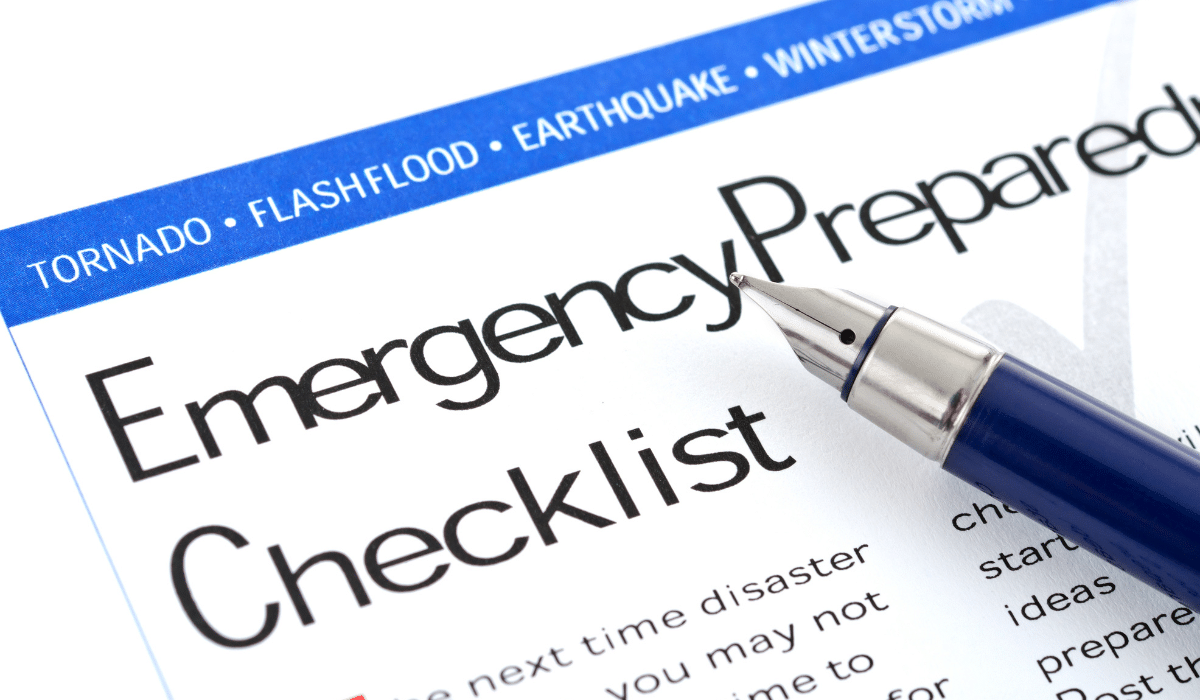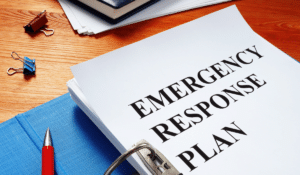In today’s fast-paced world, workplace emergencies can occur unexpectedly. And when they do, they pose significant risks to the safety and well-being of both your employees and your organization as a whole. That’s why emergency preparedness now is so critical to protecting not only your team, but your business as a whole.
Whether it’s a natural disaster, a medical emergency, or a security threat, being prepared for such situations is crucial.
Workplace emergency preparedness involves implementing proactive measures and creating comprehensive plans to mitigate risks, protect employees, and minimize the potential impact of emergencies.
In this article, we’ll delve into the importance of workplace emergency preparedness and discuss key strategies for creating a safe work environment.
Let’s break it down…
Related Article: What’s Required For Your Workplace First Aid Kit?

Understanding the Importance of Workplace Emergency Preparedness
Emergencies can happen at any time, and having a well-prepared workforce can save lives and prevent further harm.
By establishing a culture of preparedness, your business demonstrates your commitment to the safety and well-being of your employees. It also helps maintain business continuity, as a well-prepared workforce can respond efficiently to emergencies, minimizing disruptions and ensuring quick recovery.
See OSHA’s guidelines on “Emergency Preparedness and Response: Getting Started”
See OSHA’s Principal Emergency Response and Preparedness Requirements and Guidance
Conducting a Risk Assessment
Of course, any workplace emergency preparedness requires risk assessment.
For this, you’ll need to identify potential hazards specific to your industry and location. This could include natural disasters like earthquakes, floods, or wildfires, as well as human-made emergencies such as fires, chemical spills, or acts of violence.
Conducting a thorough risk assessment allows you to prioritize and allocate resources effectively, focusing on areas that require immediate attention and mitigation strategies.
For more, check out OSHA’s guidelines on “Hazard Identification and Risk Assessment”
Developing An Emergency Action Plan
Once you’ve identified the risks, you’ll need to develop emergency response plans tailored to your specific needs. These plans should outline step-by-step procedures to be followed in case of an emergency.
What is an emergency action plan?
An emergency action plan [EAP] is intended to facilitate and organize employer and worker actions during workplace emergencies, and is recommended for all employers.
Well-developed emergency plans and proper worker training (i.e., so that workers understand their roles and responsibilities within the plan) will result in fewer and less severe worker injuries and less damage to the facility during emergencies.
A poorly prepared plan may lead to a disorganized evacuation or emergency response, resulting in confusion, injury, illness [due to chemical, biological and/or radiation exposure], and/or property damage.
Two OSHA standards, 29 CFR 1910.38(a) and 29 CFR 1926.35, require written EAPs. Not all employers are required to establish EAP’s, but developing one is a good way to protect workers and businesses during an emergency. Emergency preparedness is a well-known concept in protecting workers’ safety and health.
Key elements to include in the plan:
1. Emergency Communication
Establish a reliable communication system to notify employees about emergencies and provide instructions. This could include a combination of methods such as text messages, phone calls, email alerts, and public address systems. Ensure that the contact information of all employees is up-to-date and regularly verified.
See OSHA’s guidelines on “Communication and Coordination for Host Employers, Contractors, and Staffing Agencies”
2. Evacuation Procedures
Outline clear evacuation routes and assembly points for employees to gather safely outside the building. Assign responsibilities to specific individuals who will oversee the evacuation process and assist those with disabilities or special needs.
See OSHA’s guidelines on “Emergency Action Plan: Evacuation Elements”
See OSHA’s guidelines on Exit Routes and Emergency Planning
3. Shelter-in-Place Protocols
In some situations, it may be safer for employees to stay indoors, rather than evacuate. Develop shelter-in-place protocols that outline the steps to be taken during such emergencies, such as severe weather conditions or hazardous chemical releases.
See OSHA’s guidelines on “Emergency Action Plan: Shelter-in-Place”
4. Medical Emergency Response
Establish a first-aid team or designate individuals trained in CPR and basic medical procedures. Clearly communicate the location of first-aid kits and automated external defibrillators (AEDs) throughout the workplace. Encourage employees to undergo basic first-aid training.
See OSHA’s guidelines on Occupational Safety and Health Standards: Medical and First Aid [1910.151].
Training and Drills
Developing comprehensive emergency response plans is a great start, but it’s simply not enough.
Regular training and drills remain essential to ensure employees are familiar with the procedures and can act quickly during an emergency. Conduct evacuation drills, fire drills, and other relevant exercises periodically to assess the effectiveness of the emergency response plans.
Use these opportunities to identify areas for improvement and provide additional training as needed.
Continual Evaluation and Improvement
Workplace emergency preparedness is an ongoing process.
Regularly review and update your emergency response plans to reflect any changes in workplace layout, personnel, or potential risks. Seek feedback from employees and conduct post-incident evaluations to identify any gaps or weaknesses in the response.
Implement lessons learned and make the necessary improvements to enhance overall preparedness.
Key Takeaways
Workplace emergency preparedness is vital for ensuring the safety and security of your employees, as well as minimizing the potential impact of emergencies on the organization.
By understanding its importance, conducting risk assessments, developing comprehensive emergency response plans, providing training and drills, and continually evaluating and improving the plans, your organization can create a safe and secure work environment.
Investing in workplace emergency preparedness not only protects lives but also helps organizations maintain business continuity and safeguard your reputation in the face of unforeseen events.
***
About Worksite Medical
In most cases, OSHA requires medical surveillance testing, and at no cost to employees.
Worksite Medical makes that program easier with mobile medical testing.
We conduct on-site respirator fit tests, as well as audiometric exams, pulmonary function tests and heavy metal lab work, right on your job site. We also keep accurate, easy-to-access medical records for your convenience. You’ll keep your employees at work, and stay ahead of OSHA inspections.




